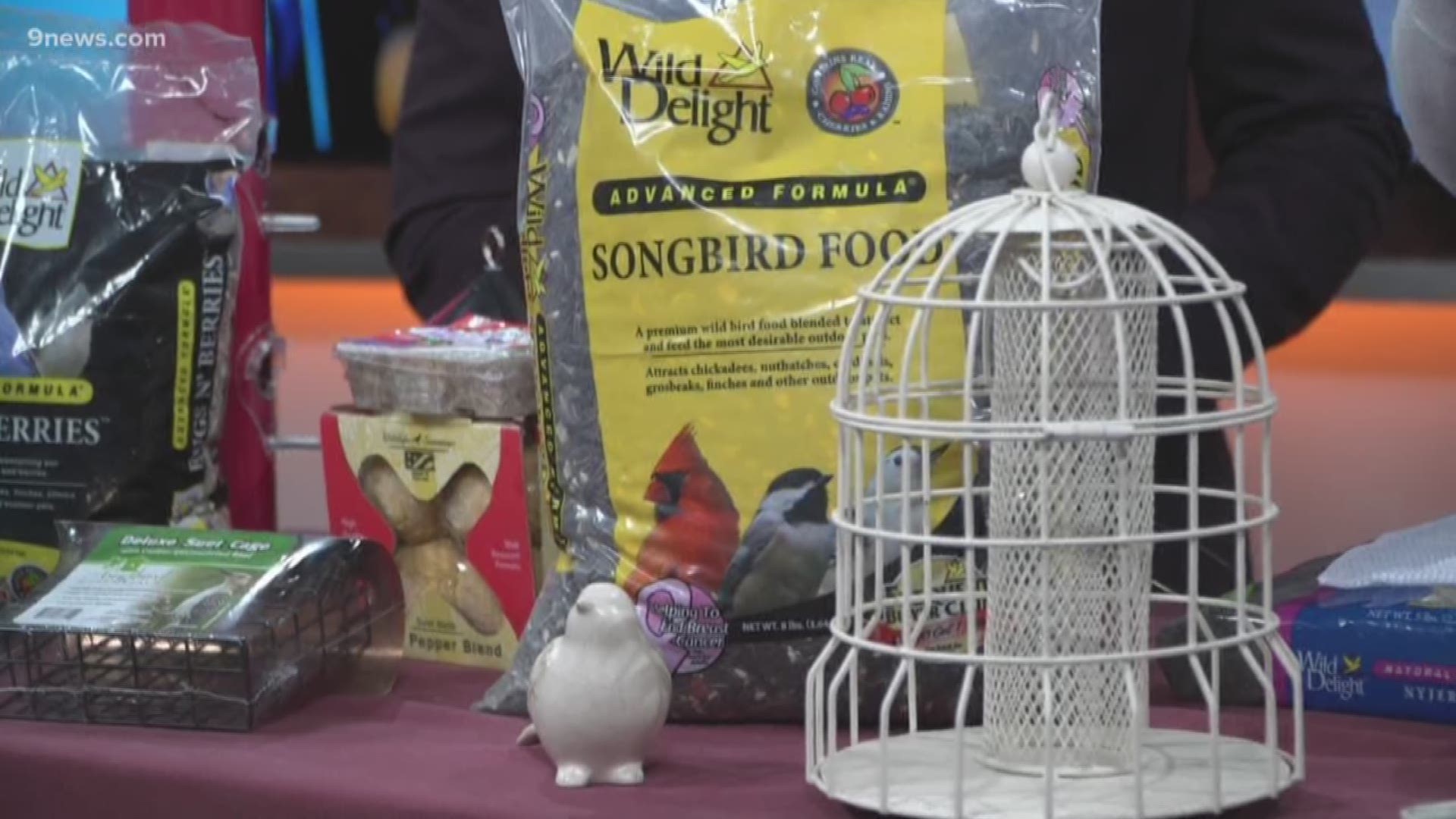DENVER — This can be a tough time of year to be a backyard bird. Lush gardens and seed-laden vegetation have withered and blown away, heavy snowfalls bury any natural sources of wild bird food and many insects are dead or dormant.
Now is the time that birds rely on the feeders in our backyards to get through the coldest parts of winter. Help make their lives a tad bit easier by providing food, water, and shelter. If you enjoy backyard bird watching, here are a few winter tips to help them survive!
Feeding options
Black-oil Sunflower Seed is packed with protein and is the best, all-around birdseed that will draw in a huge variety of species.
Safflower Seed is a good choice if squirrels keep raiding your feeders. Birds like Safflower (especially Chickadees) squirrels not so much.
Nyjer Seed is another anti-squirrel option and is a favorite food of Finches. This seed requires a special “sock” feeder to hold it.
Bird Seed Mixes (species-specific mixes too) will attract specific groups of birds and can be a huge benefit to them during a difficult winter.
Suet is made of rendered fat, seeds and grain. This is an important food in colder zones where a bird’s metabolism must work harder to keep warm. These require a feeder designed to hold either a round or square cake. This is also a good way to attract more Woodpeckers and Nuthatches to your winter garden.
Homemade suet is easy to make and is a fun project to do with children. Here is the suet recipe.
2 cups rendered fat or lard (I use Crisco)
2 cups birdseed mix
2 cups cornmeal
1 cup peanut butter
Mix the fat and peanut butter in a saucepan over low heat. In a separate bowl mix the birdseed and cornmeal. When the fat is melted, mix it in with the birdseed mixture. Allow the mixture to cool until slightly thickened then pour into molds, roll into balls or pack into pinecones.
Jazz your mixture up with dried fruit, finely cracked corn, peanuts, and even ground eggshells (if you haven’t hard-boiled them, then a quick boil of the shells will help to kill any bacteria).
Clean the snow off feeders during winter storms so that birds can easily get to their food.
Oh, those gluttonous squirrels!
If you have an ongoing battle with squirrels in your feeders, you can try squirrel-proof feeders or simply add crushed red pepper to your seed. The spice from the peppers will not be detected by birds but will give squirrels something to think about.
Water
Birds will eat snow to keep from dehydrating, but this means their bodies have to work harder to keep warm. Keep your birdbaths clean and filled with fresh water. Even in the winter, a birdbath will get dirty from frequent use and you don’t want algae or bacteria to build up. Use a heated mat, heated stone or a heated birdbath to keep ice from forming.
Nesting Material
Make your yard more attractive to birds by providing them shelter and nest construction material. This will help all birds including those that don’t visit feeders.
Put out a stash of the following: dead twigs and leaves, feathers, fluff or down (I even put out hair from cats/dogs), moss, yarn (natural fibers…nothing plastic), thin strips of material (cut up old socks).
You can leave this material out on the ground, in empty suet cages, on fences or draped across tree branches.
Birdhouse for Rent
Most birds build their nests in trees or shrubs, others seek out natural cavities in trees but there are a few dozen bird species that will nest in birdhouses. There are such a variety of birdhouses to add to your garden…species specific, single-story, decorative.
Decide what you want for your garden…something decorative to enhance the look of your garden or something purposeful to attract a species of bird – it’s your garden, you can’t go wrong and who knows, someone might move into your birdhouse!
For more information about nesting boxes, and specific recommendations for each bird species, visit your local garden center or consult Homes for Birds, an online bulletin from the U.S. Fish and Wildlife Service.
SUGGESTED VIDEOS | Animals and Wildlife

